
John Samuel Slater (born 1850 in Calcutta; died 1911 in Ealing) was a British professor of Civil Engineering at the Presidency College, Calcutta, and later principal of the Engineering College in Sibpur. [1]

John Samuel Slater (born 1850 in Calcutta; died 1911 in Ealing) was a British professor of Civil Engineering at the Presidency College, Calcutta, and later principal of the Engineering College in Sibpur. [1]
John Samuel Slater was educated at Pocklington Grammar School, and Bishop Cotton School, Simla. He graduated in 1870 at the Thomason Civil Engineering College, Roorkee, obtaining the gold medal for mathematics. The same year he was appointed to the Public Works Department of the Government of India and served at Dera Ghazi Khan and other locations in the Punjab. [2] [3]
In 1875, he was appointed Professor of Engineering at the Presidency College Calcutta, and in 1880, when the Engineering Department of that College was formed into an independent residential Engineering College at Sibpur, he took a leading part in its organisation, became one of the original members of its staff, and was eventually appointed Principal in 1891. He inaugurated a scheme of modern education for the District Schools of Bengal and Assam, and was responsible for the reorganisation of the technical schools of those two provinces. In 1897, he was for some months Inspector of Schools of the Rajshahi Division, and in 1901 officiated as head of the Educational Department of Bengal. In 1904, he was incapacitated by a serious illness which necessitated his retirement from India. [2]
He was responsible for teaching astronomy to the students of the Engineering College, and was always keenly interested in that science. [2] In 1891, while on leave, he devised and patented an armillary sphere. [4] He presented this to the Royal Astronomical Society in 1891. [5] which he used for instructional purposes. [2]
After his retirement, he devoted himself enthusiastically to an investigation of the pollen of plants, and prepared by micro-photography a very large number of enlarged photographs of pollen grains. The value of his work in this direction was recognised by the botanical authorities at Kew. [2]
He married in 1873 Jessie Frances, by whom he had a son and a daughter. [2]
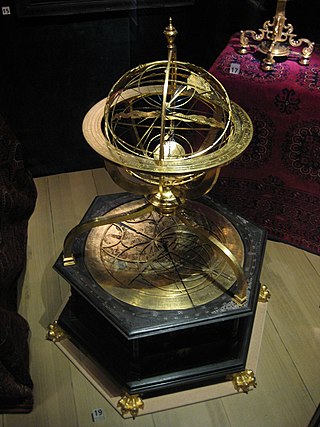
An armillary sphere is a model of objects in the sky, consisting of a spherical framework of rings, centered on Earth or the Sun, that represent lines of celestial longitude and latitude and other astronomically important features, such as the ecliptic. As such, it differs from a celestial globe, which is a smooth sphere whose principal purpose is to map the constellations. It was invented separately, in ancient China possibly as early as the 4th century BC and ancient Greece during the 3rd century BC, with later uses in the Islamic world and Medieval Europe.

Henry Thomas Colebrooke FRS FRSE FLS was an English orientalist and mathematician. He has been described as "the first great Sanskrit scholar in Europe".
Sir Ashutosh Mukherjee was a prolific Bengali educator, jurist, barrister and mathematician. He was the first student to be awarded a dual degree from Calcutta University. Perhaps the most emphatic figure of Indian education, he was a man of great personality, high self-respect, courage and towering administrative ability. The second Indian Vice-Chancellor of the University of Calcutta for four consecutive two-year terms (1906–1914) and a fifth two-year term (1921–23), Mukherjee was responsible for the foundation of the Bengal Technical Institute in 1906, which was later known as Jadavpur University and the University College of Science of the Calcutta University in 1914.
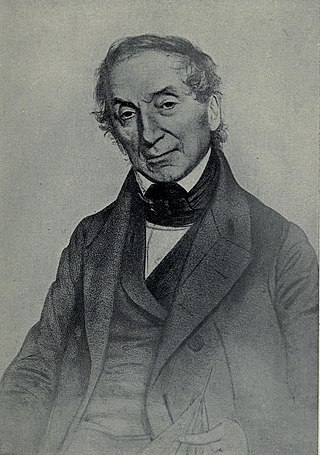
Nathaniel Wolff Wallich FRS FRSE was a surgeon and botanist of Danish origin who worked in India, initially in the Danish settlement near Calcutta and later for the Danish East India Company and the British East India Company. He was involved in the early development of the Calcutta Botanical Garden, describing many new plant species and developing a large herbarium collection which was distributed to collections in Europe. Several of the plants that he collected were named after him.

William Roxburgh FRSE FRCPE FLS was a Scottish surgeon and botanist who worked extensively in India, describing species and working on economic botany. He is known as the founding father of Indian botany. He published numerous works on Indian botany, illustrated by careful drawings made by Indian artists and accompanied by taxonomic descriptions of many plant species. Apart from the numerous species that he named, many species were named in his honour by his collaborators.
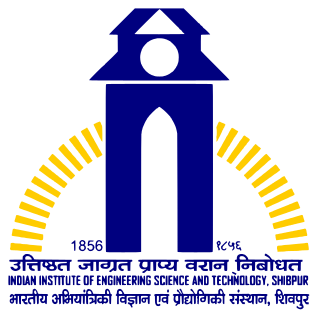
Indian Institute of Engineering Science and Technology, Shibpur, abbreviated as IIEST Shibpur is a public university located at Shibpur, Howrah, West Bengal. Founded in 1856, it is recognised as an Institute of National Importance under MHRD by the Government of India. It is controlled by the Council of NITSER.
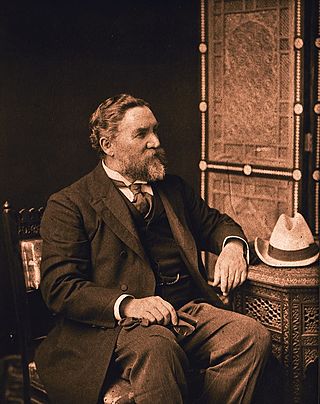
Sir George Watt was a Scottish physician and botanist who worked in India as "Reporter" on economic botany and during the course of his career in India he compiled a major multivolume work, TheDictionary of Economic Products of India, the last volume of which was published in 1893. An abridged edition of his work was also published as the single volume Commercial Products of India in 1908. He is honoured in the binomials of several plants named after him.

The Bengal Presidency, officially the Presidency of Fort William in Bengal and later Bengal Province, was a province of India and the largest of all the three Presidencies. At the height of its territorial jurisdiction, it covered large parts of what is now South Asia and Southeast Asia. Bengal proper covered the ethno-linguistic region of Bengal. Calcutta, the city which grew around Fort William, was the capital of the Bengal Presidency. For many years, the Governor of Bengal was concurrently the Governor-General of India and Calcutta was the capital of India until 1911.
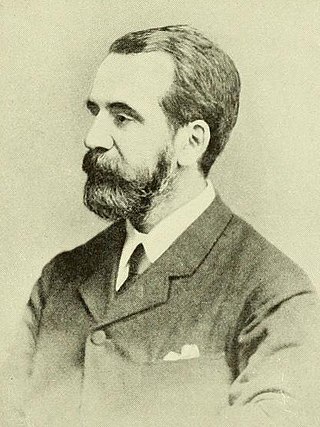
Sir George King was a Scottish-born British botanist who was appointed superintendent of the Royal Botanic Garden, Calcutta in 1871, and became the first Director of the Botanical Survey of India from 1890. He was recognised for his work in the cultivation of cinchona and for setting up a system for the inexpensive distribution of the anti-malarial quinine throughout India through the postal system.
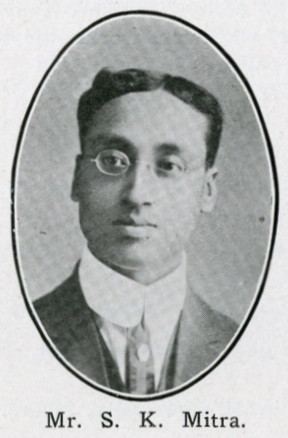
Sisir Kumar Mitra MBE, FNI, FASB, FIAS, FRS was an Indian physicist.

Sir Jadunath Sarkar, was a prominent Bengali historian and a specialist on the Mughal dynasty.
Zhang Sixun was a Chinese astronomer and mechanical engineer from Bazhong, Sichuan during the early Song dynasty. He is credited with creating an armillary sphere for his astronomical clock tower that employed the use of liquid mercury. The liquid mercury filled scoops of the waterwheel would rotate and thus provide the effect of an escapement mechanism in clockworks and allow the astronomical armillary sphere to rotate as needed.

Sir David Prain was a Scottish botanist who worked in India at the Calcutta Botanical Garden and went on to become Director of the Royal Botanic Gardens, Kew.

Botanical Survey of India (BSI) located in Kolkata, West Bengal, India. It was founded on 13 February 1890, is Government of India Ministry of Environment, Forest and Climate Change's organization for survey, research and conservation of plant wealth of India, flora and endangered species of India, including by collecting and maintaining germplasm and gene bank of endangered, patent and vulnerable plant species.

James Sykes Gamble was an English botanist who specialized in the flora of the Indian sub-continent; he became Director of the British Imperial Forest School at Dehradun, and a Fellow of the Royal Society.
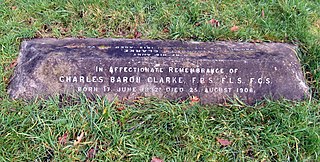
Charles Baron Clarke was a British botanist. He was born at Andover, the eldest son of Turner Poulter Clarke. He was educated at King's College School, London, and at Trinity and Queens' Colleges, Cambridge. He began the study of law at Lincoln's Inn in 1856 and was called to the bar in 1860. He lectured in mathematics at Presidency College, Calcutta, from 1857 to 1865. Clarke was Inspector of Schools in Eastern Bengal and later of India, and superintendent of the Calcutta Botanical Garden from 1869 to 1871.

Tathagata Roy is an Indian politician who served as the Governor of Tripura from 2015 to 2018 and the Governor of Meghalaya from August 2018 to the end of his term in August 2020. He was the 6th state president of West Bengal state unit of Bharatiya Janata Party from 2002 to 2006 and a member of the BJP National Executive from 2002 until 2015.
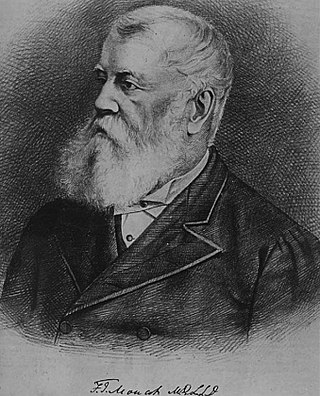
Frederic John Mouat was a British surgeon, chemist and prison reformer. He was part of the committee that helped identify the Andaman Islands as a suitable location for a convict settlement. He examined the use of chaulmogra oil in the treatment of leprosy and published the first illustrated book on human anatomy in Urdu in 1849. He was also involved in the founding of Presidency College, Calcutta.

Isaac Henry Burkill was an English botanist who worked in India and in the Straits Settlements. He worked primarily in economic botany but published extensively on plant biology, ethno-botany, insect-plant interactions and described several species. He published a two volume compilation on the plants of economic importance in the Malay Peninsula, collating local names and knowledge. He also wrote a detailed history of botany in India. The plant genera Burkillia and Burkillianthus were named in his honour.
Kalipada Biswas was an Indian botanist who specialized in the algae of the Indian region and worked at the Calcutta botanical garden erstwhile Royal Botanic Garden, becoming its first Indian director and heading it from 1937 to 1955.